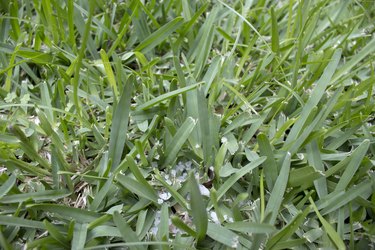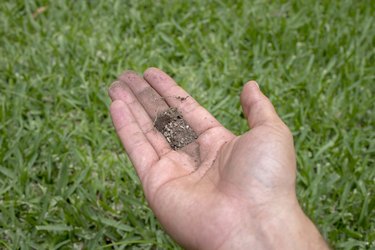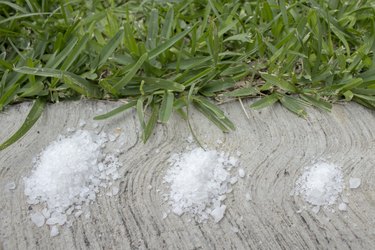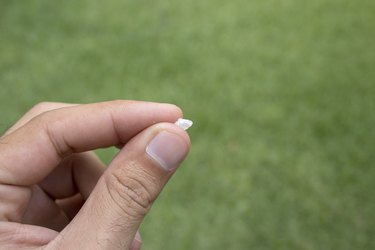
Gypsum, also known as calcium sulfate, has been used successfully to improve agricultural soil conditions in some parts of the country, particularly in salty coastal regions and arid western states. While gypsum might not live up to the myths and urban legends touting it as a cure-all for residential lawns suffering from compacted soils, applying gypsum can be helpful if your soil has high levels of sodium or low levels of calcium. Applying gypsum is as easy fertilizing your lawn.
Step 1

Test your soil to determine whether applying gypsum will be helpful. Many local university extension offices offer soil testing for a minimal charge. If your soil tests high for sodium or low for calcium, or is made up of highly compacted clay, your lawn might be a candidate for a gypsum application. Soil in urban areas is usually a hodge-podge of native and non-native soils, landscaping materials, chemical additives and organic and non-organic sub-soils, all layered beneath your lawn. Gypsum isn't nearly as effective on such layered types of soil as it is on native, compacted clay soil.
Video of the Day
Step 2

Determine how much gypsum you need for your lawn. A soil test can help determine the amount of clay in your lawn. Higher amounts of compacted clay in your soil will require a greater level of gypsum to produce the desired results. For heavily compacted soil, use 40 pounds of gypsum to cover 200 square feet, according to The Family Handyman website. The Ed Hume Seeds website recommends 40 pounds per 1,000 square feet for established lawns.
Step 3

Set your broadcast spreader to accommodate the size of the gypsum pellets. Push the spreader at your normal pace, observing the throw. Overlap the spread pattern by 6 to 8 inches to ensure complete coverage, and spread the gypsum to within 10 feet of your driveway, street or sidewalk.
Step 4

Water the gypsum into the soil. While gypsum is non-toxic to both humans and pets, and won't burn your lawn, it won't do your lawn any good sitting on top of the soil. Give your lawn a good soaking to ensure that the gypsum seeps down to where it can do its job.
Video of the Day